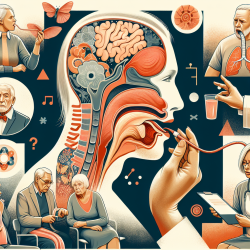Introduction
Community Health Workers (CHWs) play a pivotal role in bridging the gap between healthcare services and underserved communities. The research article "Examining the Macrosystem Level of Influence on Community Health Worker Effectiveness in the State of Nebraska: A Qualitative Approach" provides valuable insights into the barriers faced by CHWs at the macrosystem level. Understanding these barriers and the proposed solutions can significantly enhance the effectiveness of practitioners in the field.
Understanding Macrosystem Barriers
The study highlights three primary themes concerning macrosystem barriers:
- Financial Hardships: Insurance policies and economic constraints often limit access to healthcare for clients, affecting CHWs' ability to provide services.
- Immigration Issues: Policies and societal ideologies surrounding immigration can create additional barriers, such as stigma and healthcare ineligibility, further complicating CHWs' efforts.
- Community Resources: Lack of awareness and accessibility to community resources can hinder the ability of CHWs to connect clients with necessary services.
Workforce Support and Sustainability
The research identifies the need for stronger support systems within the CHW workforce. Key areas include:
- Addressing Burnout: CHWs often face overwhelming workloads, leading to burnout. Implementing better staffing and workload management can alleviate this issue.
- Supervisor Support: Effective supervision, characterized by trust and support, is crucial for CHW success. Supervisors should provide mentorship and advocate for their teams.
Proposed Solutions for Improvement
The study suggests several solutions to enhance CHW effectiveness:
- Amplifying Supervisor Support: Supervisors should actively listen to CHWs, provide problem-solving assistance, and advocate for their needs.
- Unifying CHWs: Fostering a unified CHW network can facilitate knowledge sharing and resource accessibility.
- Valuing Partnerships and Connections: CHWs should be involved in policy discussions to leverage their insights and advocate for their roles in healthcare systems.
Conclusion
By addressing the macrosystem barriers and implementing the proposed solutions, practitioners can enhance their skills and effectiveness in supporting community health. This research underscores the importance of data-driven approaches in developing sustainable solutions for CHWs.
To read the original research paper, please follow this link: Examining the Macrosystem Level of Influence on Community Health Worker Effectiveness in the State of Nebraska: A Qualitative Approach.










